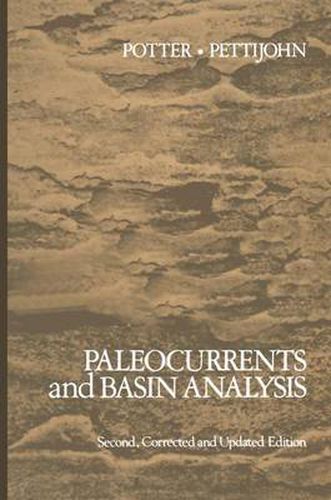Readings Newsletter
Become a Readings Member to make your shopping experience even easier.
Sign in or sign up for free!
You’re not far away from qualifying for FREE standard shipping within Australia
You’ve qualified for FREE standard shipping within Australia
The cart is loading…






This title is printed to order. This book may have been self-published. If so, we cannot guarantee the quality of the content. In the main most books will have gone through the editing process however some may not. We therefore suggest that you be aware of this before ordering this book. If in doubt check either the author or publisher’s details as we are unable to accept any returns unless they are faulty. Please contact us if you have any questions.
The study of paleocurrents, since 1963, is now a very routine part of sedimentology, and more and more such studies are finding use in other fields. Thus it seemed appropriate for us to review post-1963 developments and present them in a compact manner for the interested reader. Instead of rewriting a second edition, which thirteen years later we would organize in a completely dif ferent way, we have brought each chapter up to date with new material up to 1976. A new update supplement has in this edition been inserted after each one of the original chapters. We have stayed close to the original theme of paleocurrents-how to measure them and how to use them to solve geological problems ranging in scale from the hand specimen to the sedimentary basin and beyond. We have used many annotated references and tables to help pre sent this information to the reader. The reader will note that we have cited a few 1962 references - pUblications that appeared too late to be cited in the original 1963 edition. A few times we have also cited a reference which was included in the first edition. These are marked with an asterisk and hence do not appear in the new lists of references. We have been aided by many. In Cincinnati, WANDA OSBORNE and JEAN CARROL did typing and RICHARD SPOHN, the University’s geological librarian, was very helpful in obtaining many references to the literature.
$9.00 standard shipping within Australia
FREE standard shipping within Australia for orders over $100.00
Express & International shipping calculated at checkout
This title is printed to order. This book may have been self-published. If so, we cannot guarantee the quality of the content. In the main most books will have gone through the editing process however some may not. We therefore suggest that you be aware of this before ordering this book. If in doubt check either the author or publisher’s details as we are unable to accept any returns unless they are faulty. Please contact us if you have any questions.
The study of paleocurrents, since 1963, is now a very routine part of sedimentology, and more and more such studies are finding use in other fields. Thus it seemed appropriate for us to review post-1963 developments and present them in a compact manner for the interested reader. Instead of rewriting a second edition, which thirteen years later we would organize in a completely dif ferent way, we have brought each chapter up to date with new material up to 1976. A new update supplement has in this edition been inserted after each one of the original chapters. We have stayed close to the original theme of paleocurrents-how to measure them and how to use them to solve geological problems ranging in scale from the hand specimen to the sedimentary basin and beyond. We have used many annotated references and tables to help pre sent this information to the reader. The reader will note that we have cited a few 1962 references - pUblications that appeared too late to be cited in the original 1963 edition. A few times we have also cited a reference which was included in the first edition. These are marked with an asterisk and hence do not appear in the new lists of references. We have been aided by many. In Cincinnati, WANDA OSBORNE and JEAN CARROL did typing and RICHARD SPOHN, the University’s geological librarian, was very helpful in obtaining many references to the literature.